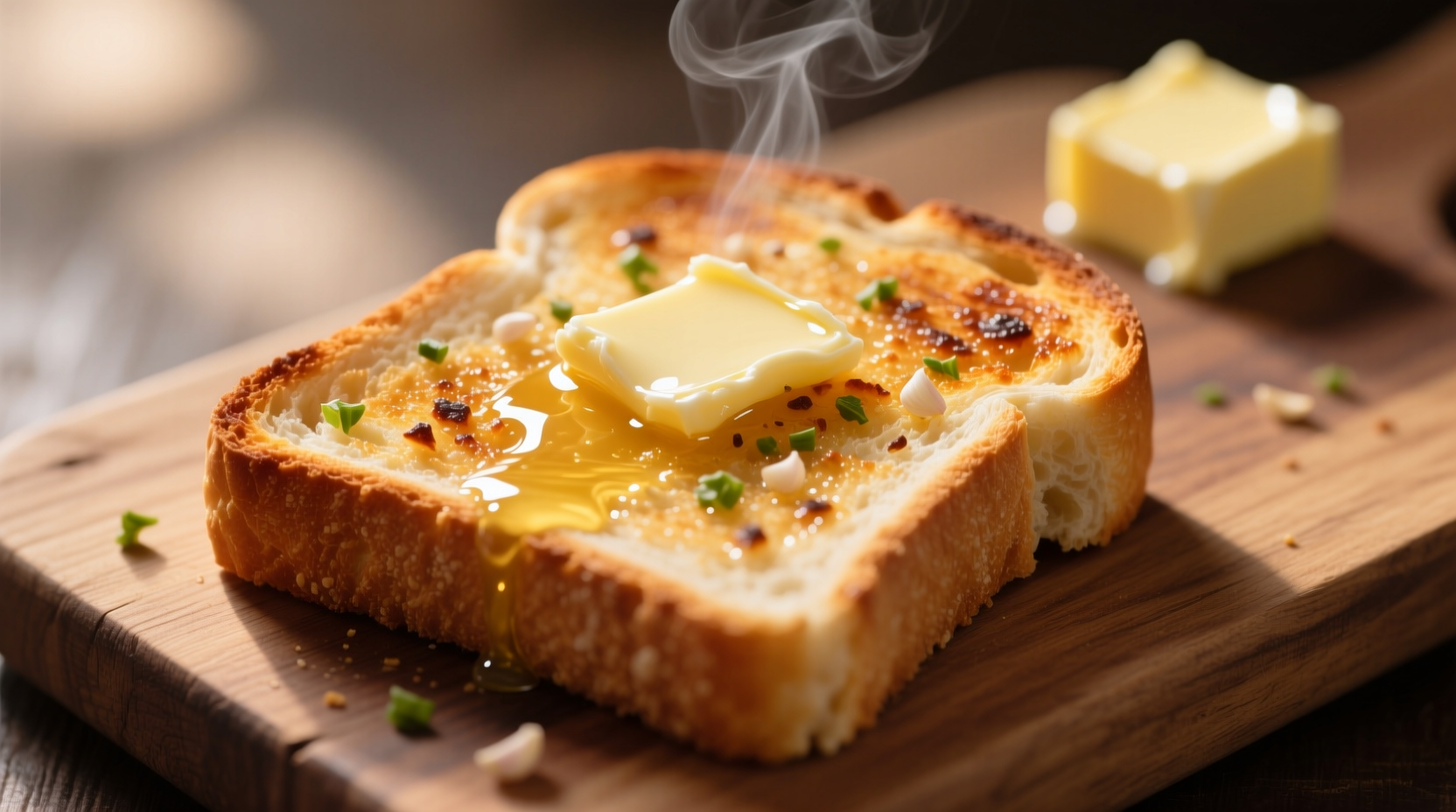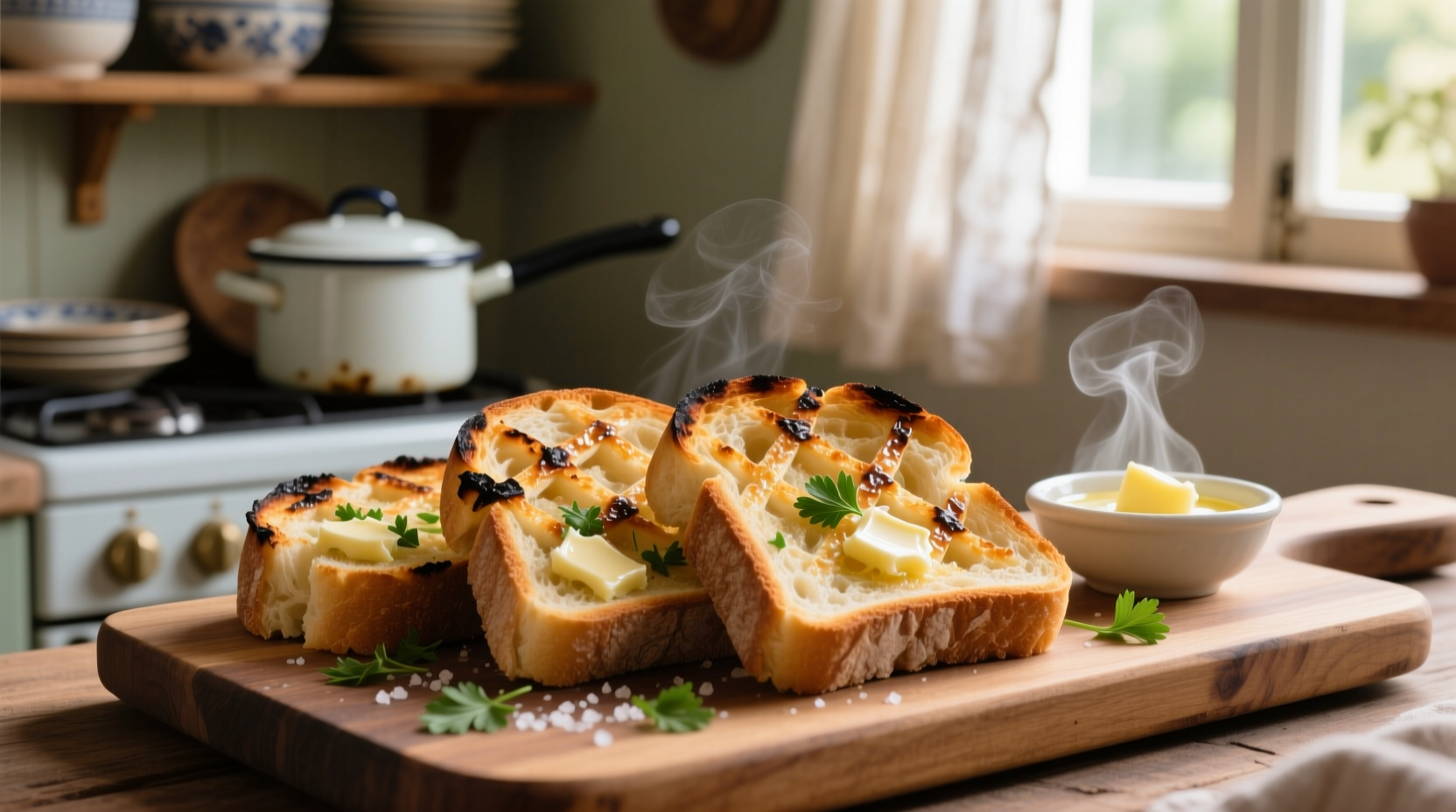The Essential Homemade Garlic Toast Formula
Homemade garlic toast transforms simple ingredients into something extraordinary when you understand the science behind perfect browning and flavor extraction. Unlike store-bought versions loaded with preservatives, fresh garlic toast delivers vibrant flavor and satisfying crunch that elevates any meal. The key lies in balancing three critical elements: bread selection, garlic preparation, and butter application.
Why Your Previous Attempts Might Have Failed
Most home cooks encounter one of two problems with garlic toast: soggy bread from excess moisture or burnt edges from improper heat management. According to culinary research from the USDA Agricultural Research Service, garlic's volatile compounds begin degrading at temperatures above 160°F (71°C), explaining why burnt garlic loses its characteristic aroma. Understanding these thresholds separates adequate garlic toast from exceptional results.
| Garlic Preparation Method | Flavor Intensity | Browning Time | Best For |
|---|---|---|---|
| Raw minced garlic + butter | ★★★★☆ | 8-10 minutes | Thin baguette slices |
| Garlic paste + oil infusion | ★★★☆☆ | 6-8 minutes | Thick sourdough |
| Roasted garlic cloves | ★★☆☆☆ | 10-12 minutes | Ciabatta or focaccia |
Step-by-Step Preparation Guide
Ingredient Selection Checklist
Choose ingredients that work together harmoniously:
- Bread: Day-old baguette or ciabatta (moisture content 35-40% ideal for optimal crispness)
- Garlic: Fresh heads with firm cloves (avoid sprouting or soft spots)
- Butter: Unsalted European-style (82% fat content) for superior browning
- Optional: Fresh parsley, red pepper flakes, or Parmesan for finishing
Perfect Garlic Butter Technique
Professional chefs use this two-stage method to maximize flavor while preventing burning:
- Mince 3-4 garlic cloves finely and combine with ½ cup softened butter
- Add to cold pan with 1 tablespoon olive oil and heat gradually to 140°F (60°C)
- Remove from heat just before garlic sizzles (critical for preserving allicin compounds)
- Cool slightly before spreading on bread

Baking Process for Optimal Results
Follow these precise steps for consistent results:
- Preheat oven to 375°F (190°C) with rack in upper third position
- Spread garlic butter evenly (⅛ inch thickness) on bread slices
- Arrange on wire rack to allow air circulation (prevents steaming)
- Bake 8-10 minutes until golden at edges but still pliable in center
- Broil 30-60 seconds for extra crispness (watch constantly)
Context-Specific Adjustments
Successful garlic toast requires adapting to your specific circumstances:
- High humidity environments: Reduce butter by 20% and toast bread first to remove moisture
- Thin baguettes: Use lower temperature (350°F) for longer duration (12 minutes)
- Dietary restrictions: Substitute butter with olive oil and nutritional yeast for dairy-free version
- Time constraints: Pre-mix garlic butter and store in refrigerator for up to 3 days
Common Mistakes and Solutions
Avoid these frequent errors that compromise quality:
- Burning garlic: Always combine with fat before heating and never exceed 160°F during preparation
- Soggy texture: Use day-old bread and avoid excessive butter application
- Uneven flavor: Let butter mixture rest 15 minutes before spreading to allow flavor development
- Stale leftovers: Store in paper bag (not plastic) and reheat in oven, not microwave
Variations for Different Occasions
Customize your garlic toast for specific meals:
- Brunch version: Add lemon zest and chives to butter mixture
- Pasta companion: Incorporate 1 tablespoon tomato paste into butter
- Appetizer upgrade: Top with prosciutto and balsamic reduction after baking
- Kid-friendly: Reduce garlic by half and add grated Parmesan
Storage and Reheating Guidelines
Proper handling maintains quality for later enjoyment:
- Store cooled toast in paper bag at room temperature for up to 24 hours
- Freeze unbuttered slices for up to 3 months (butter after thawing)
- Revive stale toast by reheating 3-5 minutes at 350°F (175°C)
- Never refrigerate - accelerates staling process according to USDA Food Research











 浙公网安备
33010002000092号
浙公网安备
33010002000092号 浙B2-20120091-4
浙B2-20120091-4